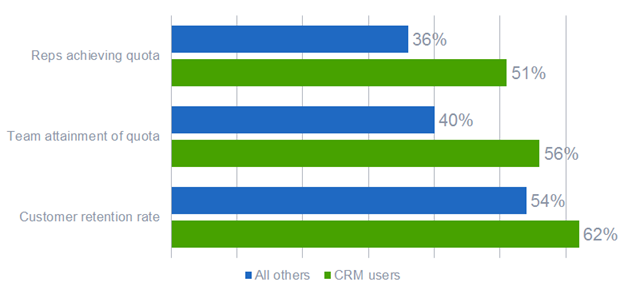When working within sales and marketing departments, you may have heard the statement, “I hate my CRM” or witnessed the eye-rolling when someone mentions their current Customer Relationship Management (CRM) system. The reality is, your dislike of your CRM has less to do with the actual software and is more likely related to your internal processes and the way you utilize it.
Aberdeen Research reviewed the benefits of the software tool and concluded companies using a CRM saw higher customer retention rates, better team attainment of quotas and better quota attainment among individual sales reps. So…we can assume CRM’s aren’t going away any time soon, and when used well, are excellent strategic tools for your business.

Image Source: SuperOffice Blog
Most companies make mistakes along the way in how their CRM is configured. Your initial needs may be vastly different to your business’ needs as it grows and matures. Here are some simple strategies to help you get the most out of your CRM.
Plan, plan, plan
When implementing a CRM or reassessing existing software – take the time to plan your funnel and sales processes. A common mistake with implementation is the short-term versus long-term strategy. Don’t just implement the software to fix today’s problems, consider what your business needs will be in the coming years.
Resist over-complicating
Resist the urge to create hundreds of fields. CRM’s have powerful reporting capabilities and it is easy to fall into the trap of wanting to capture every data point. You can add fields in the future if you determine they are business critical. Sales reps are the most vocal about their dislike of CRM’s – however they can help you obtain the most valuable information. Simplify your processes in order to maximize the value of the prospect and customer information they acquire, making it a valuable tool for your sales team to implement in their day-to-day work.
Configure, never customize
To configure, allows you to add a few fields and rename fields from the “out of the box” functionality. To customize involves changing (via software coding) how the CRM will work. If you configure, you take advantage of the already defined capability of the CRM and your upgrades, as new releases come out, will be relatively easy. If you customize, you are changing how the CRM is meant to work. Upgrades can become incredibly difficult and in some cases impossible.
CRM playbook
Focus on the data! Documenting your CRM processes, in a simple and clear playbook will help drive the discipline and value of your CRM. The playbook will be a critical component to your onboarding of new users as well.
A thoughtful CRM implementation supported by strategically planned processes will ensure the adoption and success of your chosen software solution as a strategic business tool.
You May Also Be Interested In:
- The Year Cold Calling Retires!
- Increase your Sales Pipeline in 5 Minutes
- The Persistence Payoff: Call Fast, Call Often
- Timing IS Everything! Improve your Sales Cycle
This article was published more than 1 year ago. Some information may no longer be current.

